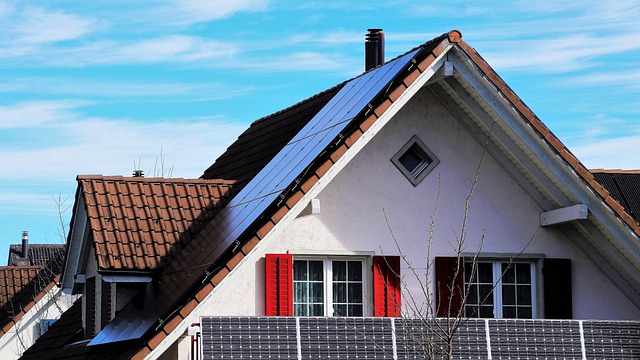For families seeking a concrete way to lower their environmental impact, installing a family solar panel system represents a powerful step toward carbon neutrality. By harnessing the sun’s energy, households can reduce dependence on fossil fuels, lower utility bills, and contribute to a broader shift toward sustainable development. This article explores how a family solar panel installation not only cuts carbon emissions but also fosters long‑term ecological stewardship and economic resilience.
Understanding the Ecological Footprint of Conventional Energy
The average family’s ecological footprint extends far beyond the walls of the home. Electricity generated from coal, natural gas, and oil discharges substantial amounts of greenhouse gases, particularly carbon dioxide and methane, into the atmosphere. When a family relies on grid electricity, their indirect emissions—those associated with the production, transmission, and distribution of power—can account for a significant portion of their annual carbon output.
- Electricity from fossil fuels can contribute up to 30 % of a typical household’s CO₂ emissions.
- Transmission losses add another 5 %–10 % to the overall energy consumption.
- Non‑renewable energy also affects local air quality, leading to health problems and additional environmental costs.
Replacing a portion of that fossil‑fuel‑based demand with a family solar panel system can dramatically shrink these numbers, placing households on a path to true carbon neutrality.
What Is a Family Solar Panel?
A family solar panel system comprises photovoltaic modules that convert sunlight into direct current (DC) electricity, an inverter that transforms DC into alternating current (AC) usable by home appliances, and a mounting structure that positions the panels to capture maximum solar irradiance. Many modern systems are designed for residential scale, typically ranging from 3 kW to 10 kW, enough to power most of a family’s electricity needs.
“Installing a family solar panel can be as simple as mounting a few panels on the roof, but the long‑term payoff—in reduced emissions, lower bills, and energy independence—is worth the initial investment,” notes a leading renewable energy consultant.
Beyond the technical components, a family solar panel system often includes a battery storage unit. While not mandatory, batteries allow households to store excess power generated during sunny periods and draw on it during cloudy days or at night, ensuring a steady, renewable supply of electricity.
Economic and Environmental Benefits
One of the most compelling arguments for a family solar panel is the blend of financial savings and ecological impact. Here’s how the two goals align:
- Reduced Energy Bills: On average, families can see a 30 %–60 % decrease in monthly electricity costs, depending on local rates and the system’s size.
- Return on Investment: The payback period for a typical residential system ranges from 5 to 10 years, after which the savings accrue free power.
- Increased Property Value: Homes equipped with solar technology often command higher resale prices, reflecting the perceived energy efficiency.
- Carbon Footprint Reduction: A 5 kW family solar panel can offset roughly 6–8 metric tons of CO₂ annually, comparable to planting over 1,200 trees.
- Job Creation: The residential solar industry supports thousands of jobs in manufacturing, installation, and maintenance—contributing to local economies.
Aligning with Sustainable Development Goals
The United Nations Sustainable Development Goals (SDGs) emphasize the importance of clean energy, climate action, and sustainable communities. A family solar panel system dovetails with several key goals:
- SDG 7: Affordable and Clean Energy—by providing renewable power to households.
- SDG 11: Sustainable Cities and Communities—through reduced pollution and increased resilience.
- SDG 13: Climate Action—by cutting greenhouse gas emissions at the individual level.
- SDG 9: Industry, Innovation and Infrastructure—by fostering advanced, low‑impact technologies.
By adopting family solar panels, households become active participants in global efforts to decarbonize economies and protect natural resources.
Planning and Installation: From Assessment to Activation
Installing a family solar panel system is a multi‑step process that begins with a thorough assessment of the home’s energy profile and roof suitability. Below is a concise guide to help families navigate this journey.
- Energy Audit: Review past electricity bills to determine average consumption. This information informs the size of the system needed.
- Site Evaluation: Inspect roof orientation, slope, and shading from trees or neighboring structures. South‑facing roofs with minimal shade typically yield the highest output.
- Financial Analysis: Compare the upfront cost, expected savings, and available incentives such as tax credits or rebates. Many regions offer performance‑based feed‑in tariffs that further enhance profitability.
- System Design: Select appropriate modules, inverters, mounting hardware, and, if desired, battery storage. Engineers will draft a layout that maximizes energy capture while ensuring safety and compliance with local codes.
- Permitting and Approval: Secure any required municipal permits or homeowner association approvals. Some communities require a review of aesthetic or environmental impact.
- Installation: Certified installers will mount the panels, connect them to the inverter, and integrate the system with the household’s electrical panel. A final inspection ensures the system meets all safety standards.
- Commissioning: Once activated, the system’s performance is monitored through a smart meter or monitoring platform, allowing families to track energy production and usage in real time.
- Maintenance: Periodic cleaning and inspections keep panels operating efficiently. Most manufacturers guarantee performance for 25–30 years, making this a low‑maintenance investment.
Challenges and Mitigation Strategies
While the benefits are substantial, families may encounter certain obstacles during the transition to solar energy. Addressing these challenges early can smooth the process.
- High Initial Cost: Financing options—such as loans, leases, or power purchase agreements—can spread the expense over time, making the upfront burden more manageable.
- Space Constraints: In dense urban settings, rooftop space may be limited. Ground‑mounted systems or community solar projects can serve as alternatives.
- Regulatory Hurdles: Keeping abreast of local regulations and staying in dialogue with authorities helps avoid delays. Many municipalities have streamlined solar permitting pathways.
- Weather Variability: Installing battery storage can mitigate the impact of cloudy days and ensure a reliable power supply when sunlight is scarce.
By proactively addressing these issues, families can fully realize the advantages of a family solar panel system.
Beyond the Home: A Community‑Wide Ripple Effect
Individual households installing family solar panels contribute to a collective momentum toward renewable energy adoption. When many families in a neighborhood embrace solar, the cumulative effect includes:
- Reduction in local peak demand, easing strain on the grid during hot summer afternoons.
- Creation of a localized microgrid that can supply backup power during outages.
- Increased community awareness of sustainable practices, encouraging further green initiatives such as rainwater harvesting or electric vehicle adoption.
In many cities, community solar projects allow residents without suitable rooftops to purchase a share of a larger solar farm, expanding the reach of clean energy.
Future Trends in Residential Solar Technology
Advancements in photovoltaic materials, storage solutions, and grid integration are accelerating the efficiency and affordability of residential solar power. Key trends include:
- Perovskite‑CIGS Tandem Cells: Combining silicon with perovskite or CIGS layers can raise efficiency beyond 30 % while reducing manufacturing costs.
- Smart Inverters: Modern inverters can manage grid interaction, perform self‑diagnostics, and support real‑time pricing models.
- Integrated Bifacial Panels: Capturing light from both sides of a panel increases output by up to 15 % on reflective surfaces.
- Modular Battery Systems: Plug‑and‑play storage units enable families to scale energy backup as needs evolve.
- AI‑Driven Energy Management: Artificial intelligence can optimize appliance usage, charging schedules, and grid export to maximize economic and environmental benefits.
As these innovations mature, the barrier to entry for a family solar panel system continues to fall, making it an even more attractive pathway to carbon neutrality.
Conclusion: A Path Toward Carbon Neutrality
Adopting a family solar panel system is more than an investment in home energy—it is a declaration of commitment to sustainable development, ecological responsibility, and climate resilience. By converting sunlight into clean electricity, families can dramatically lower their carbon footprint, reduce utility costs, and participate actively in a global movement toward a greener future. The technology is accessible, the benefits are tangible, and the impact extends far beyond the individual household, fostering healthier communities and a healthier planet.




